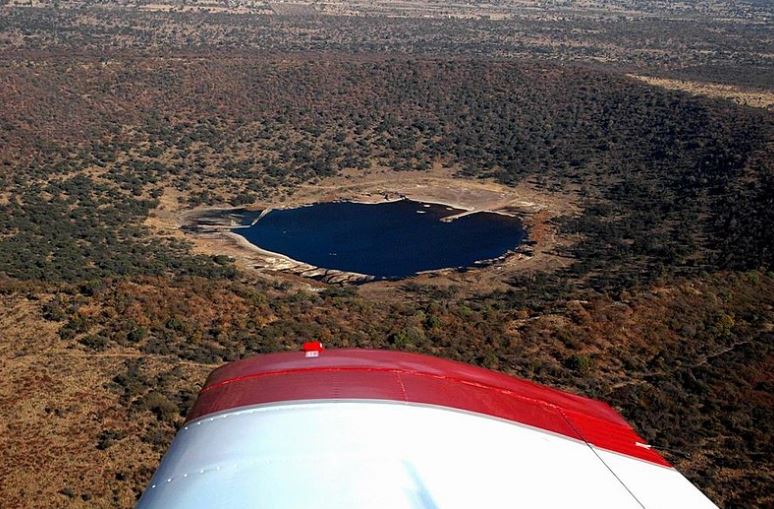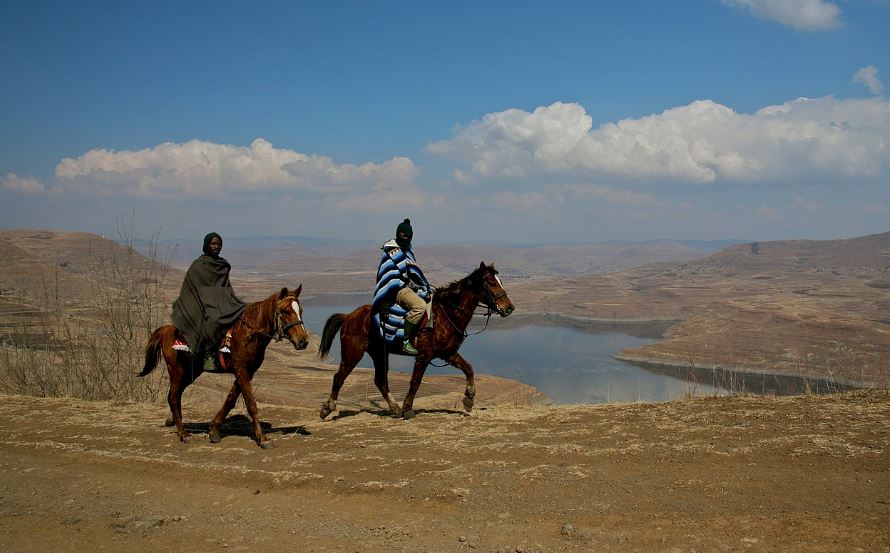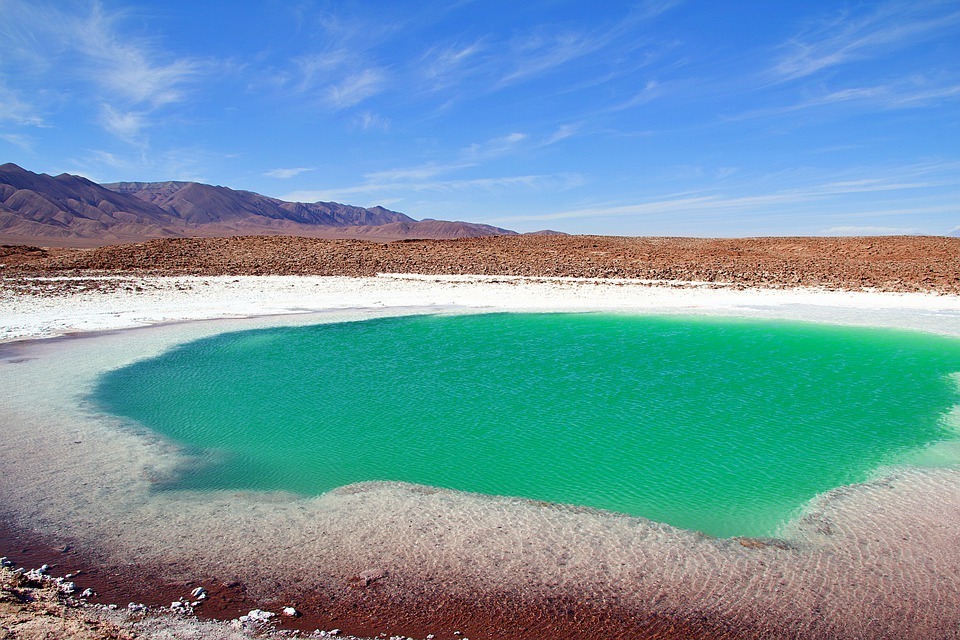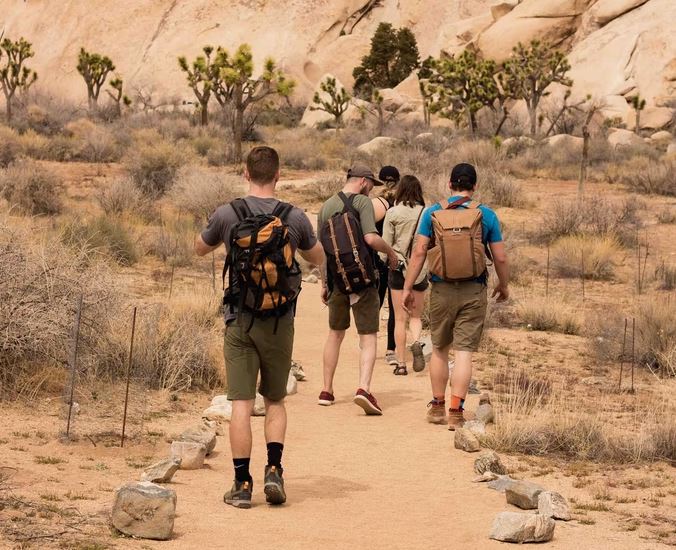Tswaing Crater is an impact crater in South Africa accompanied by a museum. It is located 40 km northwest of Pretoria. The diameter of the crater is 0.70 miles (1.13 km) and 100 meters (330 feet) deep. Tswaing Crater’s estimated age is approximately 220,000 years old during the Pleistocene period. The meteorite that hit the earth’s surface which is now Pretoria, Gauteng, South Africa was approximately 30 to 50 meters in diameter.
Today, a blind Salt Lake sits at the bottom of the Tswaing Crater. The surrounding of the lake is covered by dense vegetation of trees. This natural wonder is a feature of the region that even many locals are not aware of. However, the crater was known to the local people before it was first explored. Tswaing Crater has been preserved by the authorities while providing an adventurous visit to the crater site.
Formation of Tswaing Crater
A large 30 to 50 meters meteoroid hit the savannah near present-day Pretoria around 220,000 years ago. However, the age of the Tswaing Crater has been debatable like other craters on earth such as Wolfe Creek Crater. Some researchers believe that the crater was formed more than 300,000 years ago.
The meteorite was traveling at a speed of 12.43 to 18.64 miles per second (20 to 30 km per second) when it hit the 2.06 billion years old granite of the Bushveld Complex. The kinetic energy during an impact was transformed into an explosion. The energy created during an explosion was equivalent to 20 to 40 megatons of TNT which makes 1,000 Hiroshima-type atomic bombs.
The area of about 1,000 km2 became a desert after an impact. Furthermore, it has been calculated that such an impact could create extreme winds with a speed of more than 621 miles per second (1,000 km per second). As a result, it knocked down the trees at a distance of between 9 and 11 miles (14 and 19 km). However, the burn damage due to the explosion could extend up to 6.2 miles (10 km).
According to the researchers, there is a possibility that the early humans living in the region were exposed to this disaster. The meteorite itself was chondrite which means it was made of stone. However, the researchers have not been able to extract the meteorite material from the site. It is because due to the explosion, the meteorite turned into vapor.
Size of Tswaing Crater
Soon after the meteorite hit the earth’s surface, the crater and its surroundings cooled and vegetation returned. Since its inception, the rim of the crater has eroded like other craters on earth such as Gosses Bluff. As a result, the crater has become less steep. Furthermore, there are no remains of impact evidence. However, there have been large chunks of granite thrown hundreds of meters away from the impact crater site.
The rim of the crater rises 60 meters (197 feet) above the surrounding area. The diameter of the crater is 1,130 meters with a depth of 119 meters below the rim. The crater bed is covered with 90 meters thick sediments. Thus, the total depth of the crater is approximately 180 meters if measured from the edges of the crater. If it is measured below the surroundings, then the depth of the impact crater is 120 meters.
Cultural Significance of Tswaing Crater
The man-made stone tools found by the lake are at least 100,000 years old indicating that people were probably hunting at that time. Later on, the local Sotho and Tswana people collected salt from the lake. It has been a practice for many centuries dating back to 1,200 AD.
From 1912 to 1956, the initiative was taken over by Europeans with a company SA Alkali Ltd. They pumped the brine from the bottom of the crater as a raw material to obtain soda and salt. During this time, the impact crater became a center of attention for scientists. Firstly, it was thought of as a volcanic crater like other craters on earth such as Lonar Crater. Later on, it was declared an impact crater.
However, only well data from 1989 to 1990 demonstrated the origin of the Tswaing Crater. At this time, a dam was built on the lake inside the crater for drilling equipment which proved it to be an impact crater rather than a volcanic crater.
Salt Lake of Tswaing Crater
In the local Tswana language, the name of the crater means place of salt. Moreover, the Europeans called it Pretoria Saltpan Crater because of the large deposits of salt in the lake. The small lake at the floor of the crater has a diameter of about 300 meters but it is less than 3 meters deep. The lake does not have inlets or outlets like other craters on earth such as Pingualuit Crater.
The Salt Lake of Tswaing Crater is filled with groundwater and rainwater. Over time, sodium chloride and carbonate salts have built up. As a result, Tswaing Lake is hypersaline with 10 pH. The lake has been the subject of several local legend stories including monstrous water serpents. However, only salt-tolerant species and algae plants can survive in the salty water of this lake.
The deposits from the lake have recorded the climatic history of the past 190,000 years. However, the research on this valuable scientific asset continues.
Environmental Effects of Tswaing Crater
220,000 years ago, the plains which became South Africa’s Gauteng Province closely resembled the African woodland grasslands of today. Herbivores such as the black antelope or roan (Hippotragus sp.) and Equus Capensis, a large zebra now extinct, could have been found grazing the tall grasses. Anatomically modern humans might have lived in the area. However, they would have witnessed or fallen victim to the tremendous energy released when a comet from our solar system hit the earth’s surface.
The meteorite crashed into the grasslands outside of an area now covered by the modern city of Pretoria. It is estimated that the meteorite would have passed through the atmosphere in seconds which caused an explosion a hundred times more powerful than the explosion of the Hiroshima atomic bomb. The damage inflicted by the impact was similar to the explosion of a nuclear bomb but without damage from ionizing radiation.
Based on the comparison with calculated impact effects from other craters on earth such as Barringer Crater, the explosive shock wave would have produced winds within a distance of 3 to 5 km at a speed of 1,000 km/h. As a result, the uprooted grass, bushy willows, and acacia trees were flattened at a radical distance of 14 to 19 km.
The animals in the area would have gone through dramatic differences between internal and external pressure exerted on their bodies. As a result, they would have been a victim of edema and hemorrhage. The sum of probable effects in the area of 800 to 1,500 km2 was destruction but not extinction.
Visiting Tswaing Crater
Tswaing Crater is a popular tourist destination. In 1996, a museum was opened near the impact crater site. It is the third museum next to the impact crater after Kaali Crater Museum in Estonia and Meteor Crater Visitor Center next to Barringer Crater in Arizona, USA. Furthermore, Africa’s first geopark was also established here.
Tswaing Crater is now in a protected reserve. The visitors can enjoy their trip to Tswaing Crater with a museum display and several hiking trails to the rim of the crater and the lake inside the crater rim. Also, you can enjoy diverse wildlife living in the conservation area.
The events and activities that take place at Tswaing Crater Museum are as follows:
- Basic camping facilities and a well-established picnic area.
- Overnight accommodation in traditional style huts known as Kgotla. It is set around a Lapa area accommodating 64 people.
- The impact crater site is available for photo shoots and filming.
- Salt mine ruins.
- Guided tours include indigenous knowledge about the region, plants, local beliefs, and Tswaing history.
- Annual careers week for high school students and the public with a focus on tourism careers and heritage environments.
- Annual Heritage Day event featuring local cuisine, songs, and dance.
Tswaing Crater – 220,000 Years Old Impact Crater
Tswaing Crater is located 25 miles northwest of Pretoria in South Africa. It is one of the top 10 craters on earth that have been preserved by the authorities. A meteorite made an impact on Earth’s surface 220,000 years ago which is Pretoria now. As a result, an impact crater was formed with a diameter of 0.8 miles (1.4 km) and 650 feet (200 meters) deep. On the floor of the crater, there is a Salt Lake with deposits of sodium chloride and carbonate salts.
Tswaing Crater has been known to the local people before its exploration. However, during an impact, the surrounding was affected by the explosion and wind speed. From 1912 to 1956, Europeans started extracting the salt from the Salt Lake of the impact crater. The origin of the Tswaing Crater has been debatable if it is a volcanic crater or an impact crater. However, in 1990, it was declared an impact crater.







